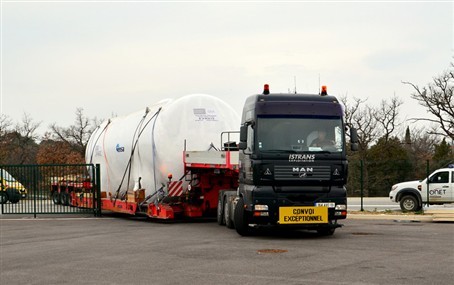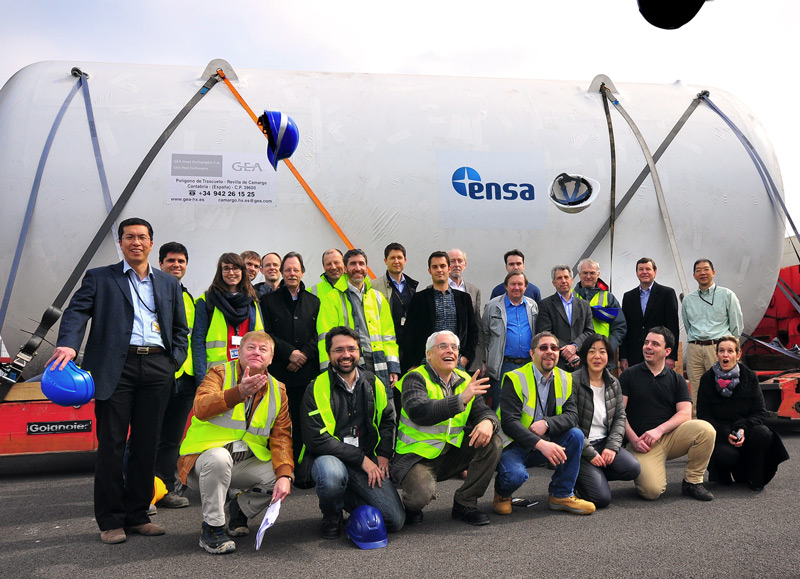ITER’s fuel cycle system starts taking shape


The arrival of the large-sized water detritiation tank is part of the six large steel vessels in total, manufactured by Ensa, the Spanish company specialising in nuclear equipment that will be delivered, in different lots between March and May, to equip ITER’s water detritiation system.
What is role the ITER water detritiation system in the Tritium plant?
To get fusion going we will need crash nuclei of deuterium and tritium at extremely high temperatures. According to the sequence of actions of the ITER fuel cycle, the two hydrogen isotopes will be supplied in the machine through the Tritium plant. The two isotopes will travel through the pipes of the system to reach the core of the machine and fuse to release energy. Then, what’s left from the fuel of the fusion reaction, together with other gases produced, will return through pumps to the Tritium plant in order to recover the tritium.
In layman’s terms, think of the water detritiation system as a washing process where gases go through several washing cycles in order to get the tritium stains out. During the fuel recovery phase, water containing tritium will be produced and treated so as to separate the oxygen from hydrogen. Afterwards, the tritiated hydrogen will be processed again in order to separate the tritium from other hydrogen isotopes so that in the end it fuses with deuterium to start all over a new series of fusion reactions.
When ITER starts operating, two emergency tanks will be used to collect water containing tritium produced by the gas detritiation system during the recovery phase in off-normal situations. To help you visualise their volume and size it’s worth sharing some figures: each of them weighs approximately 20 tonnes and measures 100m3 (9,5m x 3,9 m). In addition, four tanks will be part of the equipment that will store the tritiated water that will subsequently be detritiated. Each of them weighs 4 tonnes roughly and measures 20m3 (3,2m x 3,6m).
The contract awarded by F4E to Ensa for the final design and manufacturing, also brings together the expertise of Empresarios Agrupados and GEA as subcontractors. It took roughly 20 months for the six vessels to be designed and manufactured in order to comply with the stringent safety requirements that apply to ITER components and ensure that there will be no collapse of structure equipment with loss of confinement in case of seismic events. The overall cost of the six tanks, covered by F4E, is the range of 2 million EUR. Apart from the six tanks and their respective diagnostics, the water detritiation system consists of the main equipment and connecting pipe work. Initially, the first tank will be kept at a safe area and once the Tritium building is ready then it will be installed there.

